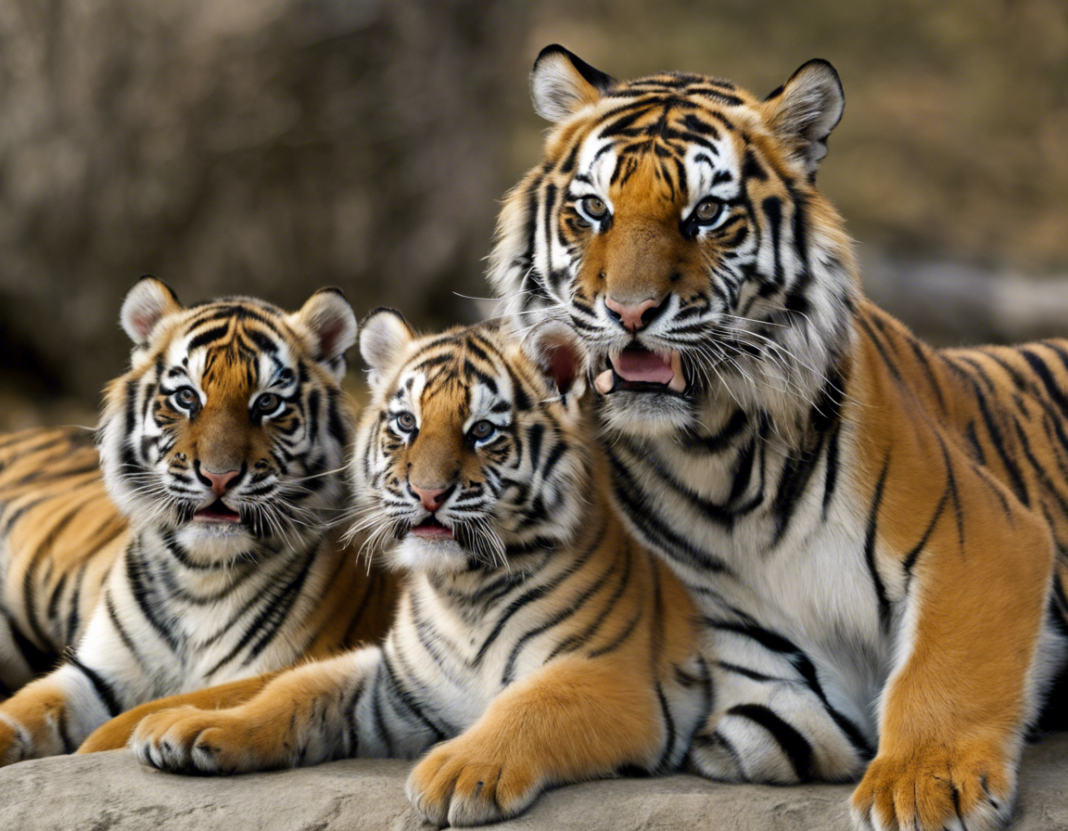Have you ever wondered what a group of tigers is called? Unlike some animals that have more commonly known collective nouns such as a “pride” of lions or a “pack” of wolves, a group of tigers actually goes by a specific term – a “streak” of tigers. This unique and interesting collective noun highlights the majestic and solitary nature of these powerful big cats.
The Solitary Nature of Tigers
Tigers are generally solitary animals, known for their fierce independence and territorial behavior. They prefer to live and hunt alone, establishing and defending large territories where they can find enough food and resources to sustain themselves. This solitary lifestyle sets tigers apart from other big cats like lions, which are known for their social behavior and living in groups called prides.
The Streak: Uniting Tigers for a Common Purpose
Despite their solitary nature, tigers may come together in certain situations, leading to the formation of a streak. A streak of tigers typically occurs when individuals gather in the same area temporarily. This can happen for various reasons, such as mating, protecting a kill, or when a mother is caring for her cubs. While these gatherings are usually temporary, they highlight the ability of tigers to cooperate and unite for a common purpose when necessary.
The Importance of Conservation Efforts
The global tiger population has been steadily declining due to various threats such as habitat loss, poaching, and human-wildlife conflict. Conservation efforts play a crucial role in protecting these endangered animals and ensuring their survival for future generations. By raising awareness, implementing sustainable practices, and supporting conservation initiatives, we can help preserve the majestic streaks of tigers in the wild.
Conservation Initiatives and Success Stories
Several organizations and governments around the world are actively involved in tiger conservation efforts. Projects range from establishing protected areas and wildlife corridors to implementing anti-poaching measures and community-based conservation programs. These initiatives have shown promising results in increasing tiger populations in certain regions and protecting their habitats from further degradation.
FAQs about Tigers and Their Behavior
1. How many species of tigers are there?
There are six subspecies of tigers, namely the Bengal tiger, Indochinese tiger, Malayan tiger, Siberian tiger, South China tiger, and Sumatran tiger.
2. What do tigers eat?
Tigers are carnivores and primarily feed on large mammals such as deer, wild boar, and water buffalo. They are also known to prey on smaller animals like monkeys and fish.
3. How fast can a tiger run?
Tigers are incredibly fast and can reach speeds of up to 60 kilometers per hour (37 miles per hour) in short bursts. Their agility and speed make them efficient hunters.
4. What is the biggest threat to tiger populations?
Habitat loss and poaching for their skins, bones, and other body parts are the biggest threats facing tiger populations. Illegal wildlife trade continues to drive the decline of tiger numbers in the wild.
5. How can I contribute to tiger conservation?
You can support tiger conservation efforts by donating to reputable organizations, raising awareness about tiger conservation issues, and advocating for stronger wildlife protection laws in your region.
6. Are there any success stories in tiger conservation?
Yes, there have been successful conservation stories in countries like India, where targeted efforts have led to the recovery of tiger populations in certain reserves. Strict anti-poaching measures and community engagement have played a crucial role in these conservation successes.
7. Do tigers form social bonds with other tigers?
While tigers are primarily solitary animals, they may form temporary social bonds with other tigers for mating or when raising cubs. These social interactions are usually brief and limited to specific circumstances.
8. How long do tigers typically live in the wild?
In the wild, tigers have an average lifespan of 10-15 years. However, tigers in captivity can live longer, with some individuals reaching their early twenties.
Conclusion
The streak of tigers exemplifies the adaptability and complexity of these magnificent creatures. While they are primarily solitary, tigers can come together for various purposes, showcasing their ability to cooperate when needed. By understanding and appreciating these nuances in tiger behavior, we can better advocate for their conservation and ensure a future where these majestic big cats continue to roam the forests of our planet.

